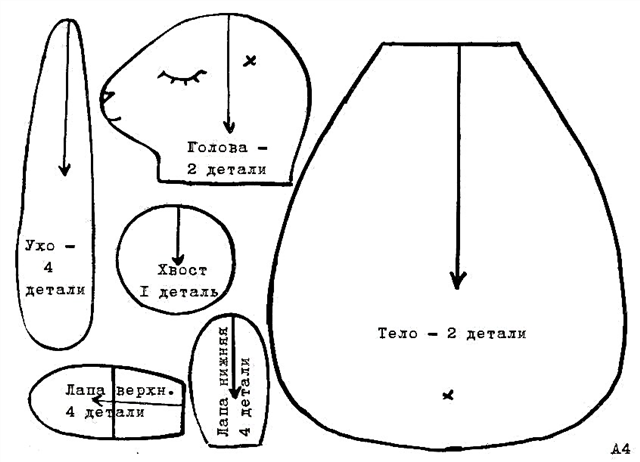The very first and most important product that a baby gets is breast milk. It contains a unique combination of vitamins, trace elements and antibodies that can provide a child with full growth and development. Some babies have difficulty digesting milk and formula. There may be several reasons, including lactase deficiency.

Lactation
The need for lactase in digestion processes
Each milk of animal origin contains a special milk sugar - lactose. It gives the product a sweetish taste. It is contained in breast milk many times more than in goat or cow's milk. That is why it is sweeter. In order for mother's milk to be assimilated, in the body of children, an enzyme is produced in large quantities that is responsible for the breakdown of milk sugar, it is called lactase. Without lactase, the intestines cannot process lactose, resulting in various types of digestive disorders.
Possible causes of gastrointestinal disorders
There are three main types of lactase deficiency:
- Congenital, when the enzyme is completely absent due to developmental abnormalities.
- Transient, when the enzyme is inactive or is present in the body in insufficient quantities.
- Temporary, it occurs after an intestinal infection.
All three reasons lead to the fact that drinking milk provokes severe abdominal pain and other digestive disorders.

Kicking with colic
Attention! Congenital lactase deficiency occurs in one out of several thousand children. Transient failure is more common in those children who are regularly overfed by their parents. Due to excessive consumption of milk, the body does not have time to accumulate the enzyme in sufficient quantities for its digestion.
The main causes of failure are:
- heredity;
- individual genetic characteristics of development;
- premature birth (prematurity);
- intestinal infections.
A striking example of acquired lactase deficiency can be observed after suffering a rotavirus infection. It is this virus that infects intestinal cells more than others, as a result of which it temporarily loses its ability to process milk sugar. That is why all children who have undergone rotavirus are shown a dairy-free diet for two to three weeks. During this time, the enzymatic capacity of the intestines will be restored.
Symptoms of breast milk intolerance
It is not necessary to be tested for lactase deficiency in an infant if the following symptoms are observed with each feeding:
- pronounced loud bubbling in the abdomen;
- increased gas formation, bloating;
- frothy stools, sometimes with greenish tinge;
- the presence of mucus in the feces;
- deficit in weight gain;
- dehydration with sufficient milk intake.
Sometimes diarrhea is replaced by another bowel dysfunction - the absence of stool for more than three days in a row, accompanied by twisting legs and tearfulness.
Diagnostic methods
The most popular and easiest way is the differential diet. In this case, the milk of the mother and farm animals is completely excluded. It is replaced with almond or soy milk. If after a certain number of days the problematic symptoms have disappeared, the milk rich in lactose is returned to the food and the symptoms are observed. If digestion becomes painful again, stool quality is impaired, the diagnosis is confirmed.

Normalization of the state on a lactose-free diet
Types of laboratory diagnostics
To determine the enzymatic problem, a lactose test is prescribed in infants, how to take which is instructed separately. For laboratory diagnostics use:
- feces;
- blood;
- exhaled air.
Interesting. A competent doctor will prescribe several types of analysis in order to exclude a false positive diagnosis with a similar clinical picture with intestinal infections.
How to collect the material correctly
It is not necessary to feed the child in the morning if blood donation has been scheduled for analysis for lactase deficiency in an infant, since it must be taken on an empty stomach. After taking the “hungry” blood, the laboratory assistant will give the child a certain portion of lactose, and after a while he will take the material again to see if the blood glucose level has increased or not.
Correct collection of feces for analysis implies the mandatory presence of a watery component. Therefore, a stool assembled from a diaper will not work because the sorbent will absorb all the water without leaving a drop for examination.
Test results
Deciphering the analysis of the feces of a newborn shows the amount of carbohydrates released from the body during bowel movement. In a healthy adult, all carbohydrates must be converted into energy, completely broken down in the intestines. The presence of any number of them suggests that the intestines cannot process the carbohydrates that have been received. This means that the in vitro (ie "in vitro") detection of carbohydrates in the feces is a sign of impaired enzymatic activity. However, in infants up to a year, this figure can be up to 0.25%, which is due to the imperfection of the infant's digestive system.
After comparing blood glucose readings, the values obtained from fasting samples should be significantly less than those obtained from blood samples collected after a baby has consumed lactose. Blood sugar levels will increase markedly if lactose is broken down by enzymes into glucose and galactose and then absorbed into the bloodstream. The absence of lactase in the body will not allow the lactic sugar to be broken down, due to which it will not be able to be absorbed into the blood, which means that the values from two different samples will be almost the same.

Blood sampling from an infant
Stool analysis for acidity in lactase deficiency reveals a pH level that will be below 5.5 units, if an enzyme problem really exists.
Which doctor to contact with the problem
If the mother notices digestive problems in the child, she should contact the local pediatrician. He observes the baby from the first days of life and can recognize the causes of discomfort by analyzing weight gain, general condition and tendency to overfeed. If necessary, he will ask for tests to confirm his guesses.
Mom should remember that congenital lactase deficiency is very rare, so the likelihood that the baby cannot digest milk is very low. Observing the diet, not increasing the dosage, not teaching the number of meals, the mother is quite capable of protecting her child from digestive problems herself.



